
The Kharkiv KhAI-5, was a Soviet reconnaissance and light bomber aircraft, designed in the mid-1930s in the Kharkiv Aviation Institute, under the direction of Iosif Grigorevich Nyeman.

The Koolhoven F.K.58 was a single engine, interceptor-fighter aircraft designed and mainly manufactured by N V Koolhoven in the Netherlands under contract by France. Intended for Armée de l'Air use, the F.K.58 saw limited service in the Battle of France.

The Fokker G.I was a Dutch twin-engined heavy fighter aircraft comparable in size and role to the German Messerschmitt Bf 110. Although in production prior to World War II, its combat introduction came at a time the Netherlands were overrun by the Germans. The few G.Is that were mustered into service were able to score several victories. Some were captured intact after the Germans had occupied the Netherlands. The remainder of the production run was taken over by the Luftwaffe for use as trainers.

The Fokker C.X was a Dutch biplane scout and light bomber designed in 1933. It had a crew of two.

PZL.46 Sum (sheatfish) was a light bomber of the Polish Air Force before World War II, which, was directed to serial production in the spring of 1939. These planes were in production, but the Polish industry did not manage to produce them before the outbreak of the war.

The Armstrong Whitworth F.K.3 was a British two-seat general-purpose biplane built by Armstrong Whitworth Aircraft during the First World War. By the end of the war it was considered obsolete for combat.
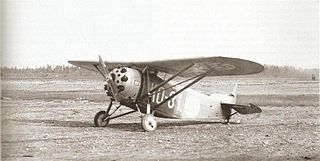
NVI F.K.31 was a Dutch designed parasol wing two seat reconnaissance-fighter, which was developed in the 1920s by Frederick Koolhoven. The aircraft saw some service in the Finnish Air Force.

Friedrichshafen FF.33 was a German single-engined reconnaissance three-bay wing structure biplane, using twin floats, designed by Flugzeugbau Friedrichshafen in 1914 for the Marine-Fliegerabteilung aviation forces of the Kaiserliche Marine.

The Friedrichshafen FF.41a was a large, German-built, three-seat, twin-engine floatplane reconnaissance aircraft designed by Flugzeugbau Friedrichshafen in 1917.

Friedrichshafen FF.49 was a German, two-seat, single-engine float-plane designed by Flugzeugbau Friedrichshafen in 1917.
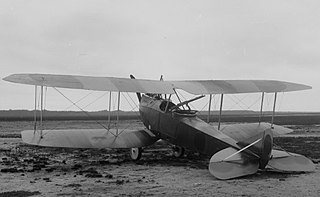
The Rumpler C.VIII was a German single-engine biplane advanced trainer manufactured by Rumpler Flugzeugwerke, in Berlin Johannisthal in 1917.

The BAT F.K.23 Bantam was a British single-seat fighter biplane produced by British Aerial Transport Company Limited of London during World War I.
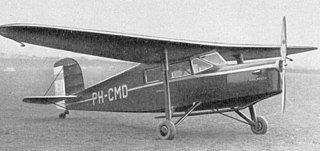
The Koolhoven F.K.43 was a small four-seat, single-engined monoplane passenger aircraft manufactured by Koolhoven in the Netherlands. It was a direct successor of the F.K.41.

The Letov Š-28 was a Czechoslovak single-engined, two-seat reconnaissance aircraft. It was manufactured by Letov Kbely in a number of versions with different powerplants. The most important version was the Š-328, which was produced in relatively high quantities.

The Koolhoven F.K.51 was a 1930s Dutch two-seat basic training biplane built by the Koolhoven Company.
The Koolhoven F.K.42 was a parasol-wing, two-seat training monoplane manufactured by Koolhoven in the Netherlands. Only one was built.
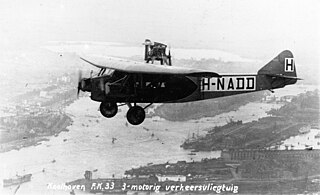
The NVI F.K.33 was an airliner built in the Netherlands in 1925 for use by KLM for night flying.
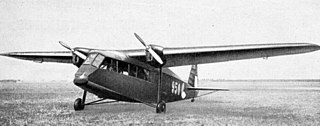
The Koolhoven F.K.49 was a photographic survey aircraft built in the Netherlands in 1935.

The BAT F.K.25 Basilisk was a prototype British fighter aircraft of the First World War. A single engined biplane intended to meet a requirement to replace the Sopwith Snipe, the Basilisk was unsuccessful, only three being built.

The Koolhoven F.K.54 was a Dutch single-engine, three-seat touring aircraft with a retractable undercarriage. It flew shortly before the start of World War II and its development was abandoned after its first flight as attention turned to military aircraft.



















